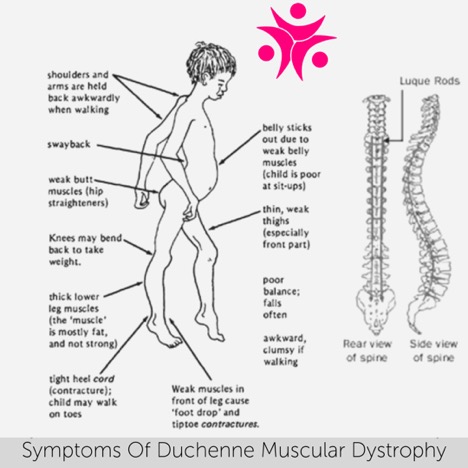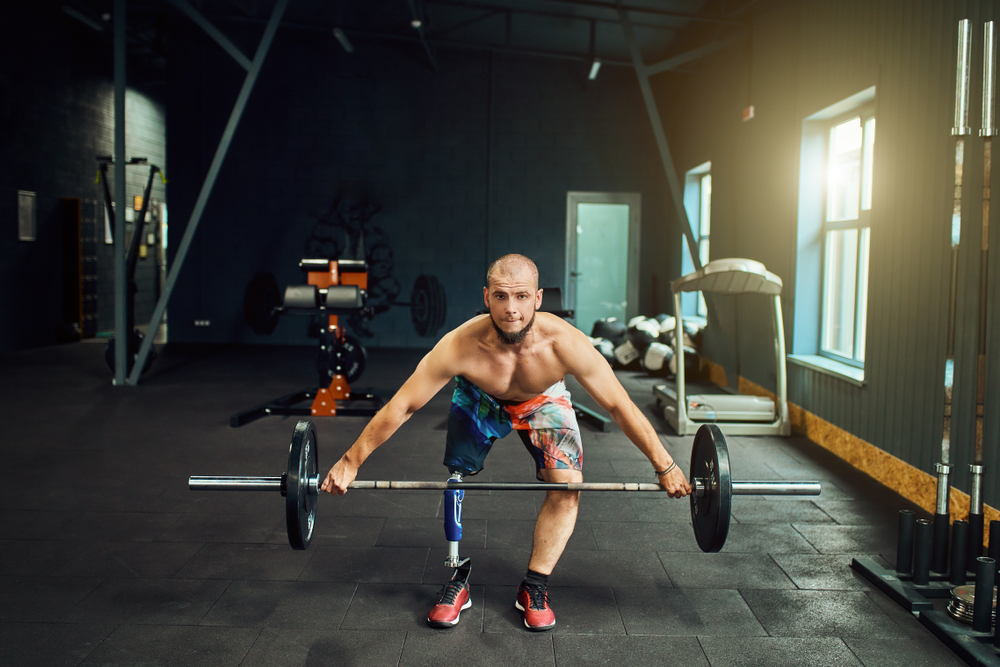Make an Appointment
What is Duchenne Muscular Dystrophy?
As one of nine different forms that muscular dystrophy can take, Duchenne muscular dystrophy (DMD) is a genetic disorder affecting muscle mobility. Someone with DMD lacks a protein called dystrophin, which in healthy people keeps the cells between muscles attached. Therefore, without this protein, the muscles deteriorate.
DMD is the most common form of muscular dystrophy. Due to the way genes are inherited, it is mostly found in males, yet some females can be affected by the disorder as well. About 1 in every 3500 live male births have DMD.
Muscular dystrophy causes, symptoms, and treatment have been studied for years and although there is no cure for DMD, there are some things you can do to help relieve its symptoms. Here, we’ll explore the cause of DMD, some of the symptoms of DMD and what prevention and treatment options are available to those with the disorder.
What Causes Duchenne Muscular Dystrophy?
What we now know as Duchenne muscular dystrophy was first described in the 1860s by French neurologist, Guillaume Benjamin Armand Duchenne, hence its name. Still, it was until the 1890s that its causes became better understood.
Then, in 1986 when genetic research started to become more advanced, it was discovered that a mutation in X chromosomes lead the DMD. That’s why it happens more often in males than females since they have double to chances of receiving a fault X chromosome.
A year later, in 1987, the protein associated with this genetic defect, dystrophin was identified.
DMD research has come a long way since these early discoveries and the MDA continues to fund these studies. Even without a cure, great strides have been made and the life expectancy of those living with DMD has gone up exponentially.
What Are the Symptoms of Duchenne Muscular Dystrophy?
The symptoms of DMD usually present themselves early on in a child’s life, sometime between the ages of 3 and 5 years old. Usually, the muscles in the hips, pelvic area, thighs, and shoulders are the first groups to be affected by DMD.
Later, the disorder starts to affect the voluntary muscles of the arms, legs, and trunk. One of the physical signs that DMD is present is the enlargement of the calf muscles.
As the muscles become weaker, it proves to be difficult to walk and nearly impossible to achieve normal mobility. Some signs of DMD might be delays in learning to walk, trouble climbing stairs, and difficulty running or jumping. A child might also develop a “waddling” gait or some form of limp.

By the time a person with DMD reaches their teenage years, the disorder becomes especially dangerous. Since the heart and respiratory system of the body is controlled by muscles, their vital organs start to become faulty.
Other common Symptoms include;
- Frequent falls
- Difficulty rising up from the ground
- Difficulty going up hills & stairs
- Difficulty running & jumping
- Pseudohypertrophy of calf muscles (over-development)
- Waddling gait pattern
- Lordosis (sway back)
- Scoliosis
- Toe walking
- Muscle cramps
- Cardiomyopathy
- Weakened respiratory muscles
- Breathing difficulties
- Learning difficulties
- Contractures
- Muscle weakness
- Wheelchair bound by approximately 12yrs of age
Duchenne Muscular Dystrophy Prevention and Treatment
Muscular dystrophy treatment varies widely and since there’s no cure, preventative measures are really only management tools to put off its detrimental effects for as long as possible.
These treatment options can help prevent or reduce issues in the joints and spine versus focusing on the muscles themselves. This helps hose suffering from DMD to remain as mobile as possible for as long as possible.
Therapy
Examples of physiotherapy that can improve the quality and length of life for people with DMD include:
- Range of motion exercises and stretching: With these types of therapy, your physio will be working on mobilising the joints and keeping them as flexible as possible. With DMD, limbs tend to draw inward and become stiffened in a fixed position. Physios work to open up the limb and maintain movement in the joints.
- Low-impact aerobic exercise: Exercises such as walking and swimming are great for those with DMD. With practice, these exercises help with strength, mobility, and overall health.
- Braces: Braces can be used both during exercise to assist with the movement but they can also be used to train specific muscle groups. A physio can work with you to decide what braces will give you the best results either as support or slowly stretch and lengthen stiff muscles.
- Mobility aids: At your physio clinic, you’ll be able to work with your mobility aids like canes, walkers, and wheelchairs and incorporated them into your physiotherapy, maintaining as much mobility as possible.
- Breathing techniques: Physiotherapists can help with more than just your voluntary muscles. They also can help you get in touch with automatic processes, specifically breathing. By working with you on breathing techniques, your physio can help practice controlling your breathing and strengthen some of those deeper muscles groups.
Exercise Recommendations
Exercise (active and passive) is an important aspect in the management of DMD. Up to the age of approximately 8yrs, boys may participate in usual physical activity. However, it is important not to over-exert (exercise to the point of exhaustion) as too much exercise, or the wrong type of exercise may cause additional muscle damage.
Swimming or hydrotherapy is an effective way to exercise without putting undue stress on muscles. The buoyancy of the water gives great assistance to weak muscles. This type of exercise can be enjoyed long after walking becomes difficult.

Passive exercise or assisted stretching should be established as early as possible. Exercise programs developed by Exercise Physiologists and Physiotherapists aim to prevent (as much as possible) the shortening of muscles or contracture; which can limit movement of joints.
The development of contractures in participants with DMD is a secondary problem after muscle weakness and causes a loss of flexibility.
The flexibility deficits in muscles reduces a participant’s ability to perform daily activities during the early stages of DMD. Therefore, flexibility exercises should be included in exercise programs.
It is important to remember that DMD is a progressive disease, therefore maintaining the participant’s current levels of function remains very beneficial for them and could possibly help to prolong their life.
Medications
In addition to your physiotherapy sessions, your doctor might also recommend some medication for DMD.
- Eteplirsen (Exondys 51): In 2016, this was the first DMD medication approved by the U.S. FDA as a way to increase muscular strength. The medication appears safe but its effectiveness is unclear, therefore it continues to be monitored and evaluated.
- Corticosteroids: Said to increase muscle strength while delaying the progression of certain types of muscular dystrophy. Risks include weight gain and weakened bones.
- Heart medications (Angiotensin-converting enzyme inhibitors): Once DMD starts affecting a persons’ heart, ACE inhibitors or beta-blockers could be necessary.
At Physio Inq, we offer specialised, individual care and offer mobile services to our clients suffering from DMD. Please call us today and set up an appointment with our mobile service or clinic across Australia. A certified physiotherapist or exercise physiologist will come right to your home to work with you on specific therapy and exercises designed to prevent and treat DMD.
Date Published: Thursday, June 27, 2019
Locate a NDIS Exercise Physiology
Service Near me
Get the experience & convinence you deserve to support your or a loved one's allied health needs.
Our NDIS Exercise Physiology team are currently serving & taking appointments in the following states and regions in Australia:
New South Wales
- Blacktown
- Blue Mountains
- Campbelltown And Macarthur
- Canterbury-Bankstown
- Eastern Suburbs Sydney
- Georges River
- Hawkesbury
- Inner East Sydney
- Inner West Sydney
- Lower North Shore
- Newcastle
- Northern Beaches
- North Sydney
- Parramatta
- Penrith
- South West Sydney
- Sutherland Shire
- Sydney CBD
- The Hills Shire
- Upper North Shore
- Waverley
- Wollongong
Tasmania
Victoria
Need to get into direct contact with ur Client Services team? We're all ears. Call our team directly on 1300 731 733











